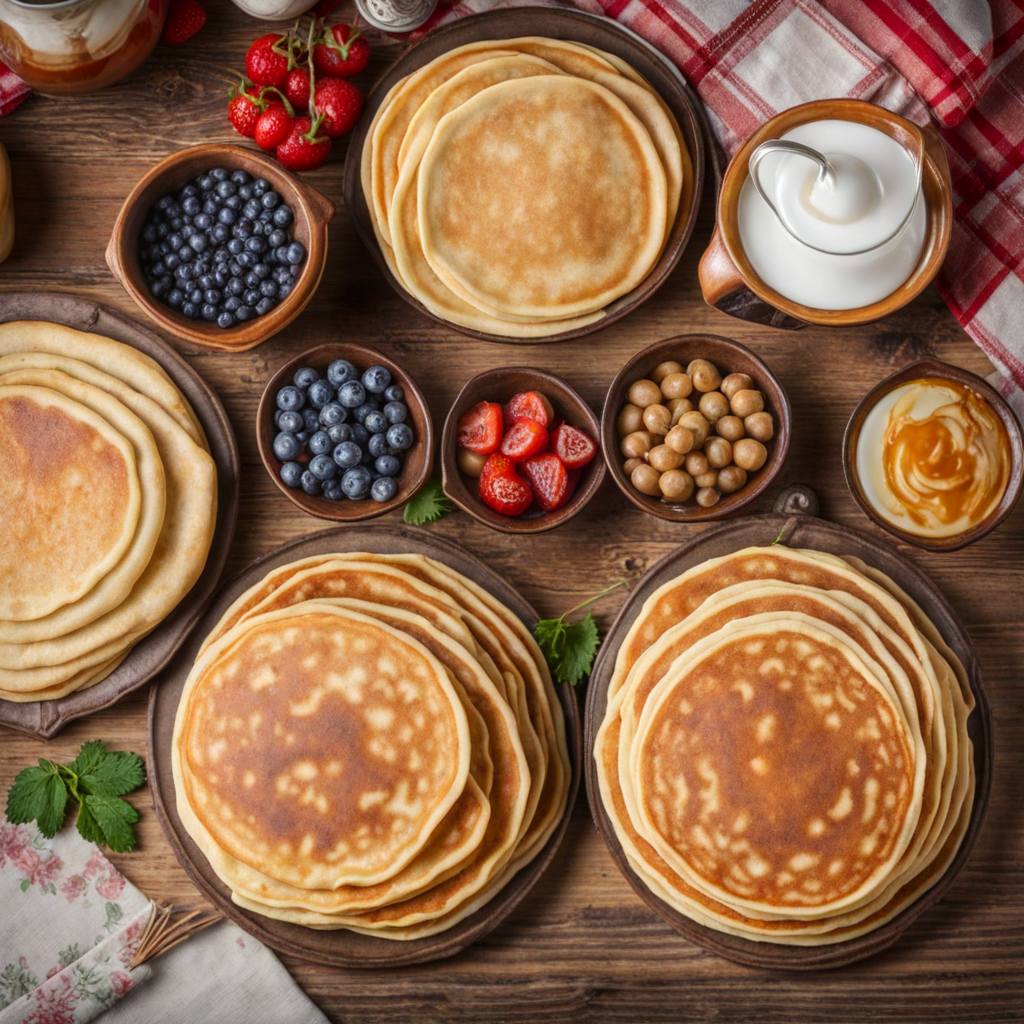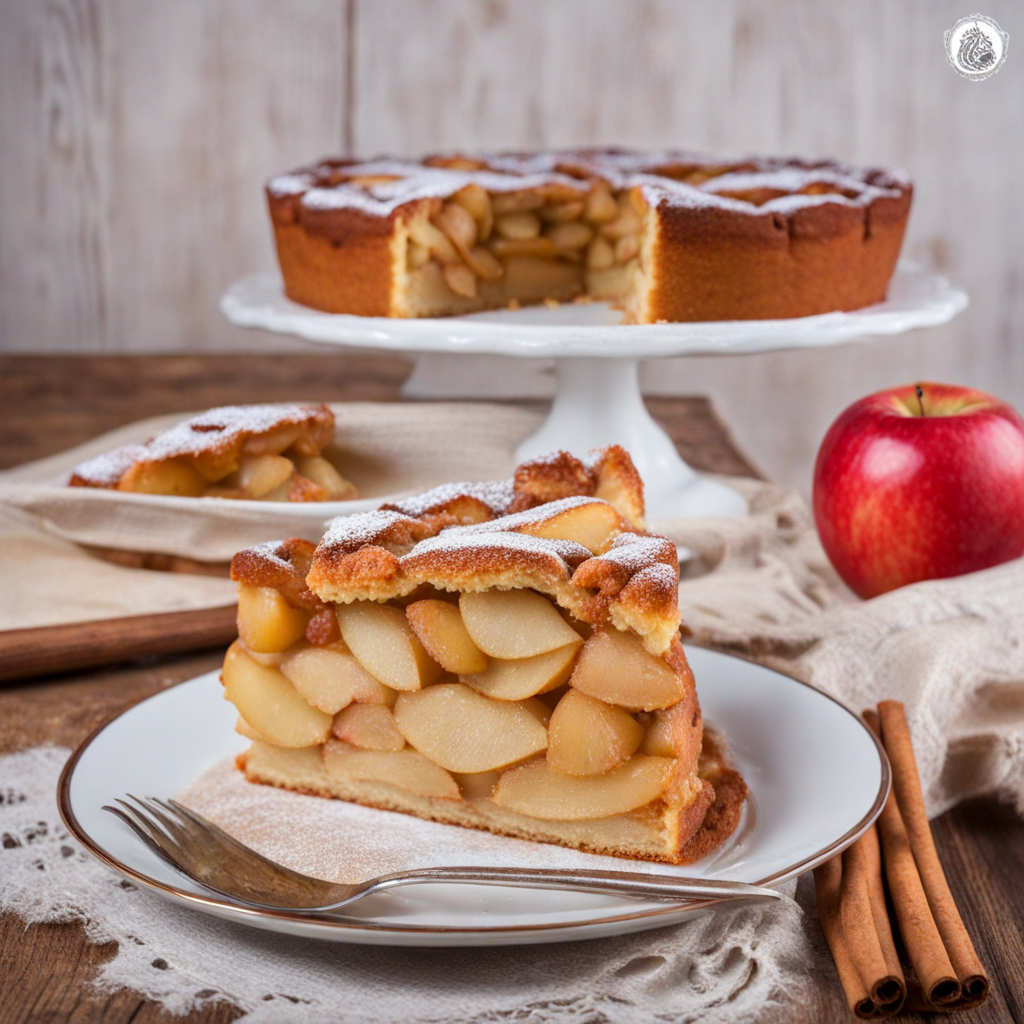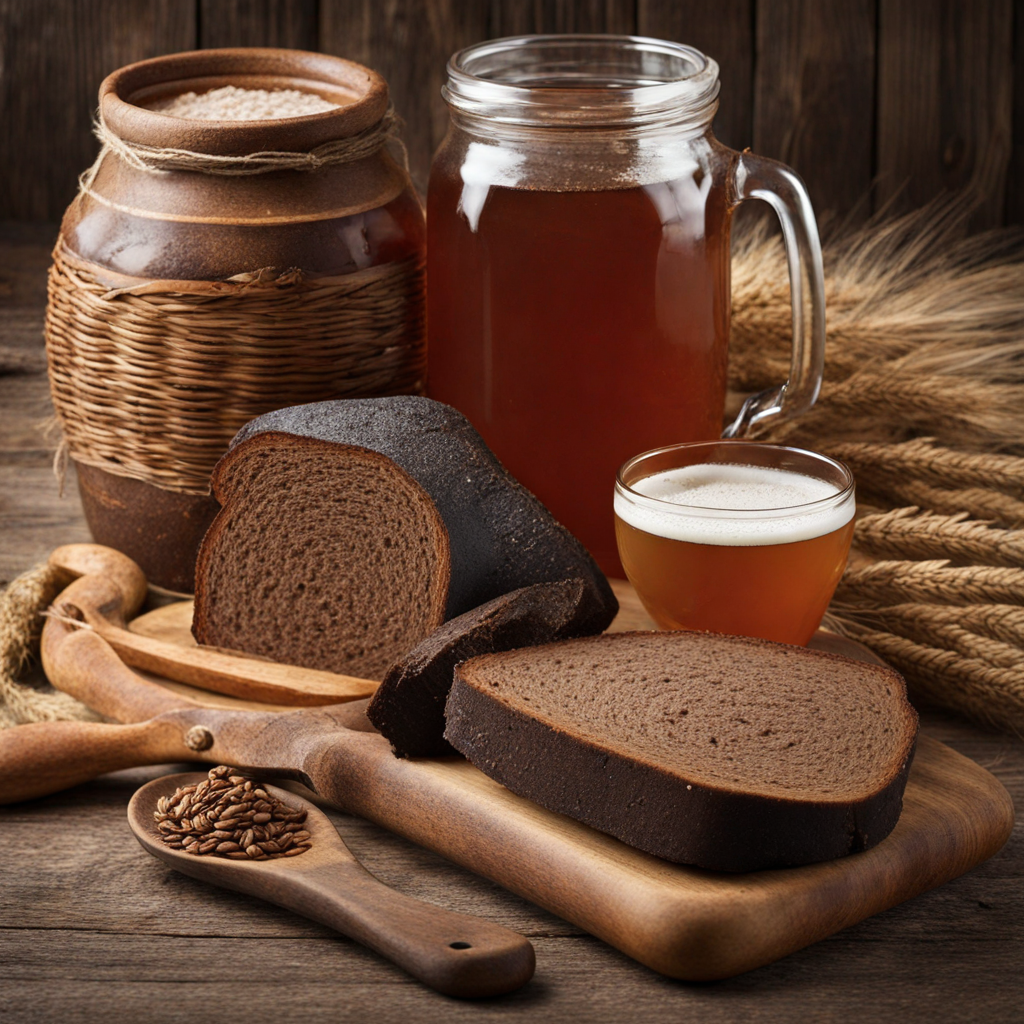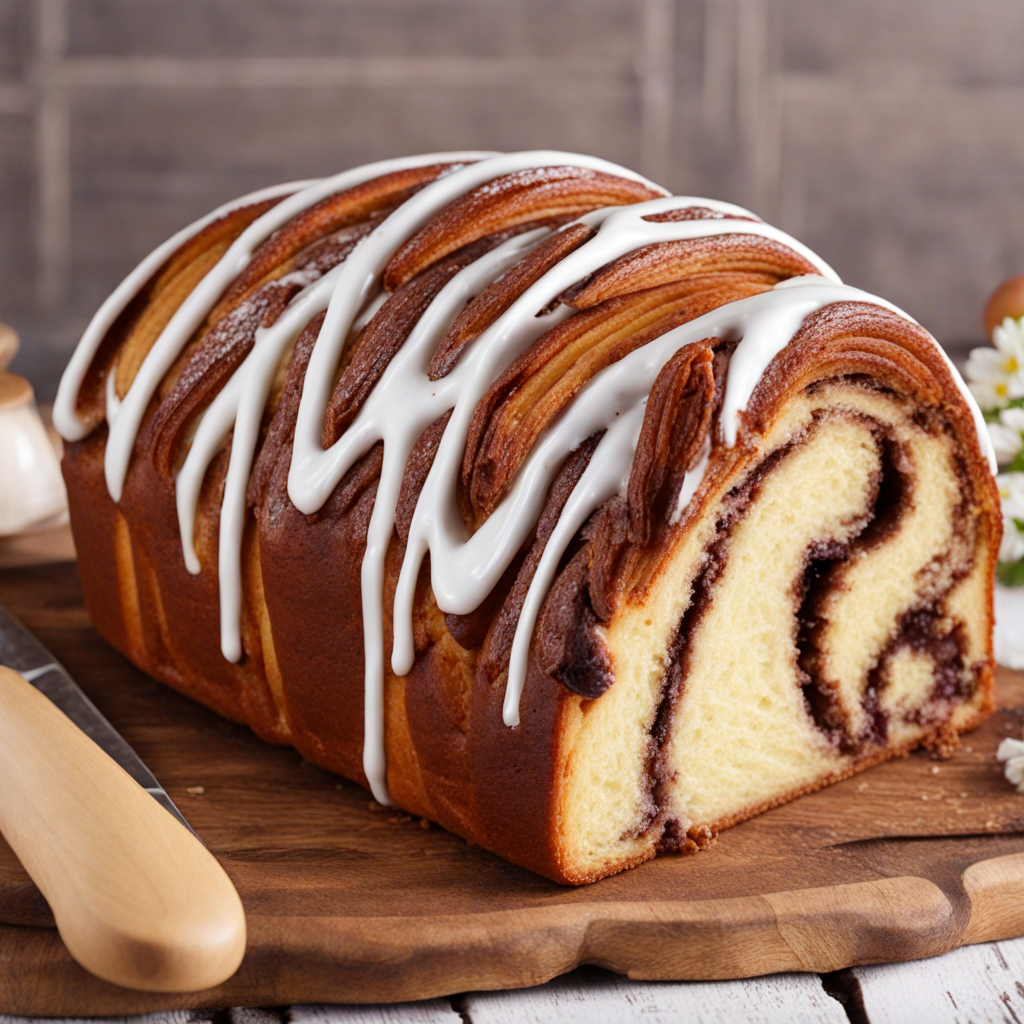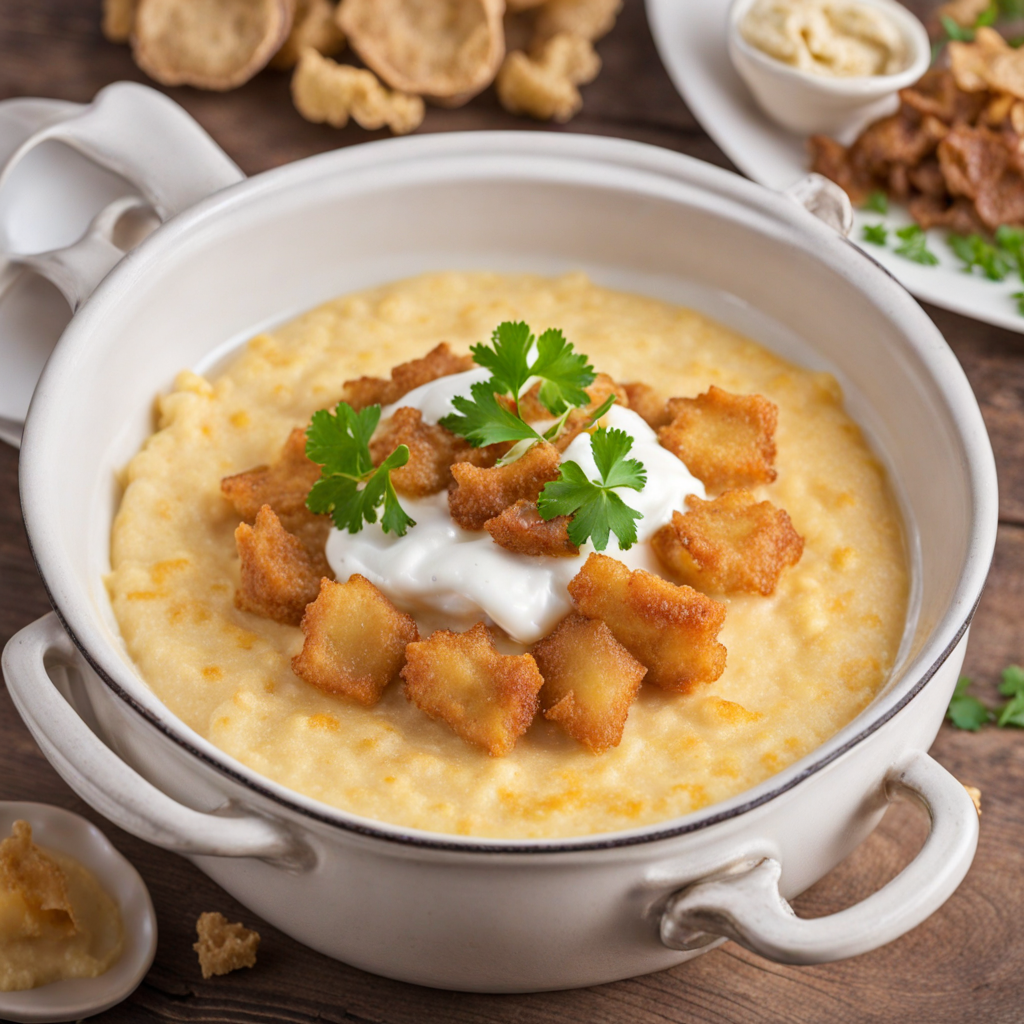Mlyntsi
Mlyntsi is a delightful Ukrainian dish that showcases the country's rich culinary heritage through its simple yet flavorful ingredients. These thin pancakes, similar to crepes, are traditionally made from a batter of flour, eggs, milk, and a pinch of salt. The batter is poured onto a hot skillet, creating a delicate, golden-brown surface that is both soft and slightly crispy at the edges. The texture of Mlyntsi is incredibly inviting, offering a wonderful contrast that makes every bite a pleasure to savor. What sets Mlyntsi apart is its versatility in fillings and toppings, allowing for a wide range of tastes. They can be enjoyed sweet or savory, depending on your preference. Common fillings include cottage cheese mixed with herbs, sautéed mushrooms, or even sweetened farmer's cheese drizzled with honey. For those with a sweet tooth, Mlyntsi can be served with fresh berries, jam, or a sprinkle of powdered sugar, making them an ideal breakfast or dessert option. This beloved dish is not only a staple in Ukrainian homes but also a symbol of warmth and hospitality. Mlyntsi are often enjoyed during family gatherings and celebrations, bringing friends and loved ones together around the table. The process of making Mlyntsi can be a fun and engaging activity, with each cook adding their unique touch to the recipe. Whether you choose to fill them with savory ingredients or sweet delights, Mlyntsi promises to deliver a memorable taste of Ukraine that will leave you craving more.
How It Became This Dish
Mlynci: The Ukrainian Pancake with a Rich History Mlynci, the Ukrainian word for pancakes, embodies a culinary tradition that stretches back centuries, weaving together the stories of culture, agriculture, and communal life in Ukraine. These delightful thin cakes, similar to crêpes or the French galette, have become a staple in Ukrainian households, resonating with deep cultural significance and a rich historical narrative. Origins and Historical Context The origins of mlynci can be traced to the early Slavic peoples, where the act of grinding grain to make flour was an essential part of daily life. Archaeological evidence suggests that the domestication of grains such as wheat and barley began in the region over 6,000 years ago. As these grains became staples, the practice of making flatbreads and pancakes naturally evolved. The word "mlynci" itself is derived from "mlyn," which means "mill" in Ukrainian, highlighting the importance of milling in the preparation of these pancakes. The technique of creating thin pancakes is believed to have spread throughout Europe, with variations appearing in neighboring countries. In Poland, for instance, they are known as "naleśniki," while in Russia, they are referred to as "blini." Each culture has its own twist on the dish, but the fundamental concept remains the same: a simple batter of flour, water, and eggs cooked on a hot surface. Cultural Significance Mlynci holds a place of honor in Ukrainian cuisine, often associated with significant cultural and religious occasions. They are traditionally made during Maslenitsa, a week-long festival celebrating the end of winter and the arrival of spring. This festival, marked by the consumption of pancakes, symbolizes the sun and the warmth it brings. Mlynci, being round and golden, resemble the sun, making them an essential offering during this time. During Maslenitsa, families gather to prepare mlynci together, fostering community spirit and familial bonds. The act of cooking becomes a communal activity, often accompanied by songs, stories, and laughter, as well as the sharing of fillings ranging from sweet to savory. Mlynci can be filled with cottage cheese, jam, mushrooms, or meat, showcasing the versatility of the dish and the creativity of the cook. In addition to festive occasions, mlynci are also a staple of everyday life in Ukraine. They are often served as breakfast or dessert, and their simplicity makes them a beloved choice for families. The fillings can vary based on personal preference and regional ingredients, highlighting the adaptability of this dish throughout Ukraine’s diverse landscapes. Ingredients and Regional Variations The basic ingredients for mlynci are simple: flour, water or milk, eggs, and a pinch of salt. However, variations abound depending on local customs and available ingredients. Some regions may incorporate buckwheat or corn flour, adding a unique flavor profile and texture to the pancakes. In Western Ukraine, where the influence of neighboring Eastern European cuisines is strong, mlynci might be served with rich mushroom fillings or topped with sour cream and dill. In contrast, in the central regions, they are often paired with sweet fillings such as fruit preserves or sweetened cheese, exemplifying the dish's versatility. Development Over Time As a food item, mlynci has evolved over the centuries, adapting to the socio-political changes within Ukraine. During the Soviet era, traditional recipes were often modified to accommodate the limited availability of certain ingredients. However, the essence of mlynci endured, and they remained a cherished part of Ukrainian identity. In modern times, with the resurgence of interest in traditional foods and local ingredients, mlynci have experienced a renaissance. Chefs and home cooks alike are returning to the roots of Ukrainian cuisine, experimenting with new fillings and cooking techniques. The rise of farm-to-table dining has also influenced how mlynci are made, with a focus on organic and locally sourced ingredients. Furthermore, the global diaspora of Ukrainians has contributed to the spread of mlynci beyond the borders of Ukraine. In communities around the world, mlynci are often served at family gatherings, symbolizing a connection to heritage and home. They have become a dish that transcends geographical boundaries, bringing together people of Ukrainian descent and introducing others to the rich flavors of Ukrainian cuisine. Mlynci in Contemporary Cuisine Today, mlynci can be found in various forms across Ukraine and in Ukrainian restaurants worldwide. Chefs are reimagining this traditional dish by incorporating contemporary culinary techniques and flavors, showcasing the adaptability of mlynci to modern palates. For instance, some chefs are experimenting with gluten-free flours or incorporating unique spices and herbs into the batter, while others focus on creating gourmet fillings that reflect global culinary trends. Moreover, the rise of food blogs and social media has made it easier for home cooks to share their own recipes and variations of mlynci, fostering a sense of community among those who cherish Ukrainian cuisine. Cooking classes focusing on traditional Ukrainian dishes often feature mlynci, further entrenching their status as a beloved culinary ambassador of Ukrainian culture. Conclusion Mlynci are more than just a simple pancake; they are a symbol of Ukrainian history, culture, and resilience. From their ancient origins to their modern iterations, mlynci reflect the agricultural heritage of Ukraine and the communal values that define its people. As they continue to evolve, mlynci remain a cherished part of Ukrainian identity, bridging the past and present while inviting the world to partake in their delicious legacy. Whether enjoyed at a family gathering, a festive celebration, or a modern restaurant, mlynci encapsulate the warmth, richness, and diversity of Ukrainian culinary tradition.
You may like
Discover local flavors from Ukraine



